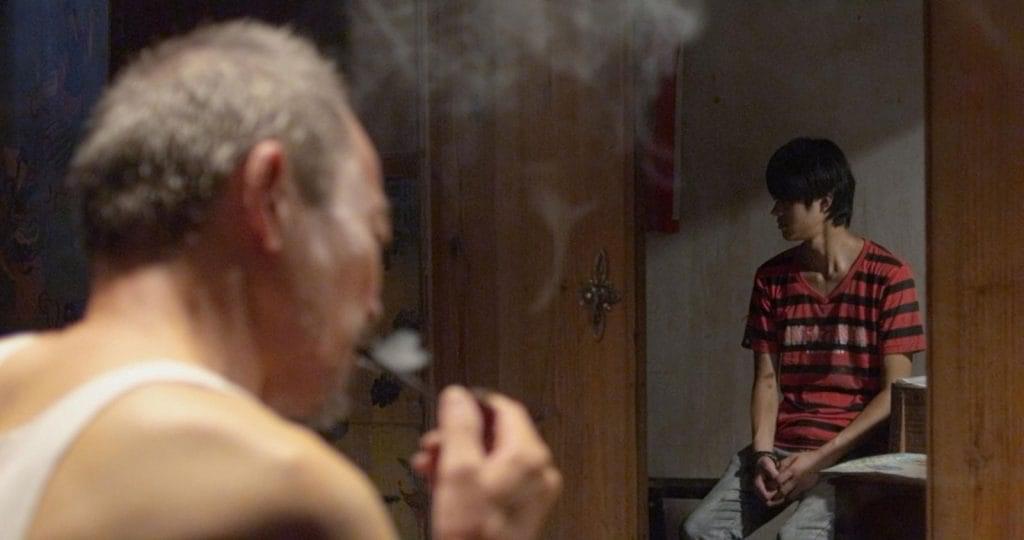
Many film festivals often follow the cynical cue of the thuggish and exorbitantly expensive market machines employed by Hollywood studios to promote a current release, hoping the event will cultivate its own mainstream longevity. It wouldn’t be difficult to imagine the Hamptons Film Festival opting for this kind of marketing strategy – given the summer resort’s Gatsby-like reputation and allure – not to mention the satirical attention it receives from documentary filmmakers like Barbara Koppel.
However, much to this world-weary screenwriter’s surprise, the shutters of this grand and affluent beachfront community are hardly closed tight against the stranger. That is, the lesser-known, stalwart filmmakers who, against all odds, take on subjects that Hollywood’s money managers prefer to shun.
The Hamptons Festival’s Director of Programming, the elegant, gracious, and entirely self-effacing Rajendra Ray, remarked, “Unfortunately, most images we see these days mirror the frenetic times in which we live, and rarely create a zone for contemplation…Having spent the better part of the past year zipping from one festival to another searching for the intoxicating, inspirational films in this year’s program, I came to realize that most film festivals are just as frenetic and rarely provide safe sanctuary for the true cinephiles.”
No one can accuse the Hamptons of being a particularly frenetic spot in late October. Many of its stately summer homes are empty, as are Main Street’s blocks and corners. Golden sunlight saturates the facades of its quiet, fashionable boutiques, and just as suddenly the skies can turn chalky with low-lying clouds, fall’s cool and crisp blowing in like a barbarian invasion. At this time of year, the verdant countryside, its open beaches and pounding surf, envelope the village with a sense of quiet contemplation. What better place to huddle in a dark cinema, to see films you’ll probably never see in any other outlet. Venturing to East Hampton in October almost feels like a quest for the authentic.
Several documentaries exhibited at the festival, say, for instance, Jaimie Johnson’s “Born Rich,” played conspicuously and freshly on the resort’s silver spoon reputation. If you’re an HBO subscriber, you might get a chance to see “Born Rich,” thanks to Sheila Nevins’ keen interests and bold programming style. Another documentary feature, “My Architect,” concerns Nathaniel Kahn’s tale of love, art, betrayal, and forgiveness – taking an illegitimate son on a heart-wrenching odyssey to understand his long-dead and legendary father, Louis Kahn.
Among the notable feature offerings included in the festival were “Spinning Boris” – Richard Spottiswood’s funny and intriguing film about a group of elite American political consultants – played with oily precision by Jeff Goldblum, Anthony LaPaglia, and Liev Schreiber. They arrive in frigid Moscow to turn Boris Yeltsin’s abysmal approval ratings around on the eve of Russia’s 1996 election – only to be denied access to their “client” for fear that the unlikely team of spin doctors would make Yeltsin look like a tool of the West. As it turns out, their only hope to reverse the then-President’s downhill slide was to win the confidence of Boris’ daughter Tatiana – convincing her their highly specialized gifts would win the day.
Another feature in the festival, “Wilbur Wants to Kill Himself,” concerned two eccentric thirtysomething brothers living in a dilapidated bookshop in Glascow. One, named Harbour, is a nauseatingly upbeat optimist. The other, Wilbur, sees no compelling reason to remain in this world. When Harbour sets out to find his suicidal brother a girlfriend in the hopes of turning Wilber’s life upside down with happiness – Harbour, instead, suddenly finds himself falling in love with Wilbur’s intended savior.
These and many other films at the Hamptons Festival were captivating not only as deserving popular art – but also as a heroic attempt to bring attention to an American and foreign film culture that’s long been abnegated by the movie press. In 2003, most film “critics” do little more than serve the privileged business interests of Hollywood media giants. In turn, since the eighties, contemporary filmmaking – as its exhibited in this country – has become more and more alienated from its limitless possibilities. The American film industry has become far more concerned with the creativity of selling – that is, devising schemes that will put a***s in seats – rather than giving serious consideration to what or why it’s selling what it’s selling – much less the artistic value of its “product.”
Perhaps one of the most heroically defining programs of the Hamptons Film Festival – bucking this oppressively commercial trend – was its “Conflict and Resolution Program.” Put together by the Guggenheim’s wise and unclassifiable beauty, Associate Curator for Film and Media Arts, Maria-Christiana Villasenor, the films all confronted our world’s unnerving trends towards violence, intolerance, and political apathy. The permanently memorable works of non-fiction filmmaking included “Galoot” – an examination of the Israeli-Palestinian conflict by Asher de Bentolila Tlalim; Omri Levi’s “Miss Entebbe – a story about a young Israeli girl’s decision to kidnap a young Palestinian neighbor; “Tomas De Guerra” by Patricia Trujillo – a cuttingly personal account of the expanding conflict in Colombia; Robert Herzog’s short, called “Flights,” about students awaiting the Vietnam-era realities just outside their ivory towers; and Christine Choy’s deeply moving “Sparrow Village” – a look at the tearful struggle of young girls hoping to educate themselves deep in the mountains of China’s Leishan province – a haunting and mesmerizing story that will never fade – never vanish – from at least this writer’s mind.
This past autumn weekend, it was hard to imagine a setting that surpasses East Hampton in cultivating an abiding interest in film.

